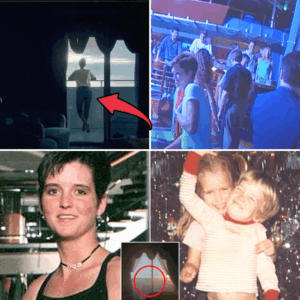In the high-stakes world of electric vehicles and cutting-edge technology, few companies command as much attention as Tesla. On October 22, 2025, the automaker released its third-quarter earnings, painting a picture of resilience mixed with frustration. While Tesla notched a record number of vehicle deliveries and beat revenue expectations, the bottom line told a different story: profits plunged, margins squeezed, and adjusted earnings per share fell short of Wall Street’s hopes. The result? Tesla’s stock tumbled nearly 5% in after-hours trading, erasing recent gains and leaving investors questioning whether the company’s ambitious pivot to artificial intelligence and robotics can sustain its sky-high valuation.
This marks the fourth straight quarter of earnings disappointments for Tesla, a stark contrast to the glory days when the company routinely shattered expectations and propelled its shares to stratospheric heights. Year-to-date, Tesla’s stock has climbed about 12.3%, buoyed by hype around autonomous driving and humanoid robots. But the post-earnings dip pushed shares down around 4% in early trading the following day, with the company’s market capitalization hovering at a still-impressive $1.53 trillion. For a firm that’s long traded more like a tech disruptor than a traditional carmaker, these results underscore the growing pains of transitioning from mass-market EVs to a future dominated by AI-driven innovations.
At the heart of the earnings call was CEO Elon Musk, whose visionary rhetoric often overshadows the numbers. True to form, Musk spent little time dwelling on the quarterly shortfall. Instead, he doubled down on Tesla’s long-term bets: robotaxis zipping through city streets without human drivers, energy storage systems powering entire grids, and—most tantalizingly—a legion of humanoid robots transforming labor as we know it. Executives name-dropped “Optimus,” Tesla’s in-development bipedal bot, a whopping 36 times during the call. Musk hailed it as potentially “the biggest product of all time,” even dubbing it an “infinite money glitch” that could generate boundless revenue by deploying fleets of tireless workers in factories, homes, and beyond.
Yet, amid this futuristic fervor, Musk dropped a bombshell that shifted the conversation from silicon dreams to stark corporate realities. Toward the call’s close, as discussions circled back to governance and incentives, the billionaire entrepreneur laid bare his deepest worry—not supply chain snarls, not fierce competition from Chinese rivals, but something far more personal and existential. “My fundamental concern with regard to how much money and control I have at Tesla is if I go ahead and build this enormous robot army, can I just be ousted at some point in the future?” Musk said, his voice carrying a mix of defiance and vulnerability. “That’s my biggest concern. That is really the only thing I’m trying to address with this. It’s called compensation, but it’s not like I’m gonna go spend the money. It’s just, if we build this robot army, do I have at least a strong influence over that robot army?”
This candid admission ties directly to Tesla’s ongoing saga over executive pay. In September 2025, the board proposed a jaw-dropping compensation package for Musk valued at nearly $1 trillion in stock options, contingent on hitting audacious milestones like producing a million robotaxis and a million Optimus units while ballooning the company’s valuation into the multi-trillion-dollar realm. It’s a sequel to the 2018 package, worth about $56 billion at the time, which was voided by a Delaware court earlier this year amid lawsuits alleging conflicts of interest. Shareholders are set to vote on the new plan soon, and Musk has been unapologetically vocal: without it, he won’t fully commit to unleashing Tesla’s robotic potential. “Um, that’s my biggest concern,” he reiterated, framing the payout not as greed but as a safeguard for his vision. In essence, Musk is betting the farm on robots—and he wants unbreakable reins to steer the herd.
To understand why this gnaws at Musk, one must zoom out to Tesla’s precarious position. The company has always been a cult of personality, with Musk as its unrelenting architect. He’s the one who turned a fledgling startup into a global powerhouse, delivering over 1.2 million vehicles year-to-date despite a 6% dip from 2024’s pace. But that charisma cuts both ways. His forays into politics—backing controversial figures and sparring publicly on social media—have alienated customers in key markets like Europe, where sales slumped amid backlash. Competitors such as Volkswagen and BYD are nipping at Tesla’s heels with cheaper, more accessible EVs, while U.S. trade tariffs and shifting subsidies add layers of uncertainty. In this maelstrom, Musk sees himself as indispensable, the sole guardian against short-sighted boards or activist investors who might derail the robot revolution.
Financially, Q3 offered glimmers of hope amid the gloom. Revenue surged 12% year-over-year to $28.1 billion, topping analysts’ $26.37 billion forecast, thanks largely to a 44% jump in energy generation and storage sales to $3.42 billion. This segment, now nearly a quarter of total revenue, highlights Tesla’s diversification beyond cars: Megapack batteries are snapping up contracts for renewable grid support, a bright spot as EV demand cools globally. Automotive revenue grew a more modest 6% to $21.2 billion, propped up by those record 497,099 deliveries—though production lagged at 447,450 units, signaling bottlenecks in scaling.
The dark clouds, however, were impossible to ignore. Net income cratered 37% to $1.37 billion, while adjusted earnings per share clocked in at 50 cents, missing the 54-cent consensus. Gross margins, once a Tesla hallmark, continued eroding under the weight of higher production costs, escalating R&D spends on AI, and a 44% drop in lucrative regulatory credits to $417 million. These credits—essentially payments from legacy automakers scrambling to meet emissions rules—have been a profit lifeline, but with EV adoption stalling and policies in flux, they’re fading fast. Operating expenses ballooned 50%, funneled into everything from Gigafactory expansions to the neural networks powering Full Self-Driving (FSD) software. And then there are the tariffs: Musk and CFO Vaibhav Taneja pegged their Q3 bite at over $400 million, split between U.S. levies on Chinese parts and retaliatory duties abroad.
Musk brushed off these headwinds with characteristic bravado, insisting Tesla is “uniquely positioned” for the AI era. He touted breakthroughs in Optimus’s dexterous hands, capable of intricate tasks like folding laundry or assembling circuit boards—feats that could slash labor costs across industries. Production of the first-generation Optimus is slated for internal use next year, with external sales ramping in 2027. “We’re talking about potentially billions of these robots,” Musk enthused, envisioning a world where human drudgery yields to mechanical efficiency. Paired with robotaxis, which Musk promises to deploy driverless in Austin by year’s end and expand to 8-10 U.S. cities soon after, this “robot army” could redefine Tesla as an AI juggernaut, not just an automaker.
But the robot army isn’t without risks—internal ones, that is. Musk’s ouster fear stems from his current 13% ownership stake, diluted by relentless stock-based hiring and secondary offerings. The proposed pay package isn’t cash; it’s options that would boost his voting power to around 25%, giving him veto-like sway over strategic calls. Critics decry it as entrenchment, arguing Tesla’s board is too cozy with the CEO. Supporters, including many retail investors, see it as essential fuel for Musk’s genius. Without it, he hinted darkly, the robot army might migrate elsewhere—perhaps to xAI, his separate venture, or even a SpaceX-Tesla mashup. “I would never be a part of an army,” Musk quipped during the call, a nod to his self-deprecating humor, but the subtext was clear: control or chaos.
Beyond the CEO’s personal stakes, Tesla faces broader hurdles that could hobble this vision. FSD adoption remains tepid, with just 12% of the fleet subscribed to the supervised version—a far cry from the unsupervised utopia Musk has teased for years. Regulatory scrutiny looms large; the National Highway Traffic Safety Administration is probing Tesla’s Autopilot after recent crashes, and robotaxi rollouts will demand ironclad safety proofs. In Europe, sales are tanking not just from economic woes but from consumer fatigue with Musk’s outspoken conservatism, which has sparked boycotts and memes branding Teslas as “MAGA machines.” China, accounting for over 20% of sales, offers relief with potential trade thaw signals, but Beijing’s favoritism toward local players like BYD keeps the pressure on.
Looking ahead, Musk sketched an optimistic roadmap to assuage doubters. Cybercab, the two-seater robotaxi, enters production in Q2 2026, promising rides cheaper than buses. Heavy-duty Semi trucks hit volume next year, challenging diesel dominance in logistics. Energy storage scales with Megapack 3, and Optimus V3 debuts in Q1 2026, showcasing advanced gait and cognition. No hard volume guidance emerged—blame volatile trade policies and supply chains—but Musk projected 20-30% delivery growth in 2026, hinging on these bets panning out.
For investors, Musk’s revelation crystallizes Tesla’s double-edged sword: unparalleled innovation tethered to one man’s whims. The stock’s volatility—up 1,000% since 2020, yet prone to 50% drawdowns—mirrors this tension. Bulls argue the robot army could mint trillions, justifying a price-to-earnings ratio north of 100. Bears counter that without Musk’s unchecked reign, execution falters, and near-term EV commoditization erodes moats. As the pay vote looms, one thing’s certain: Tesla’s fate hangs on whether shareholders grant their mercurial leader the keys to his mechanical empire.
In a company born from audacity, Musk’s biggest concern isn’t failure—it’s success without safeguards. Whether this fuels a renaissance or fuels more drama, Tesla’s next chapter will be as riveting as it is risky. For now, the robot army marches on, one uncertain step at a time.




